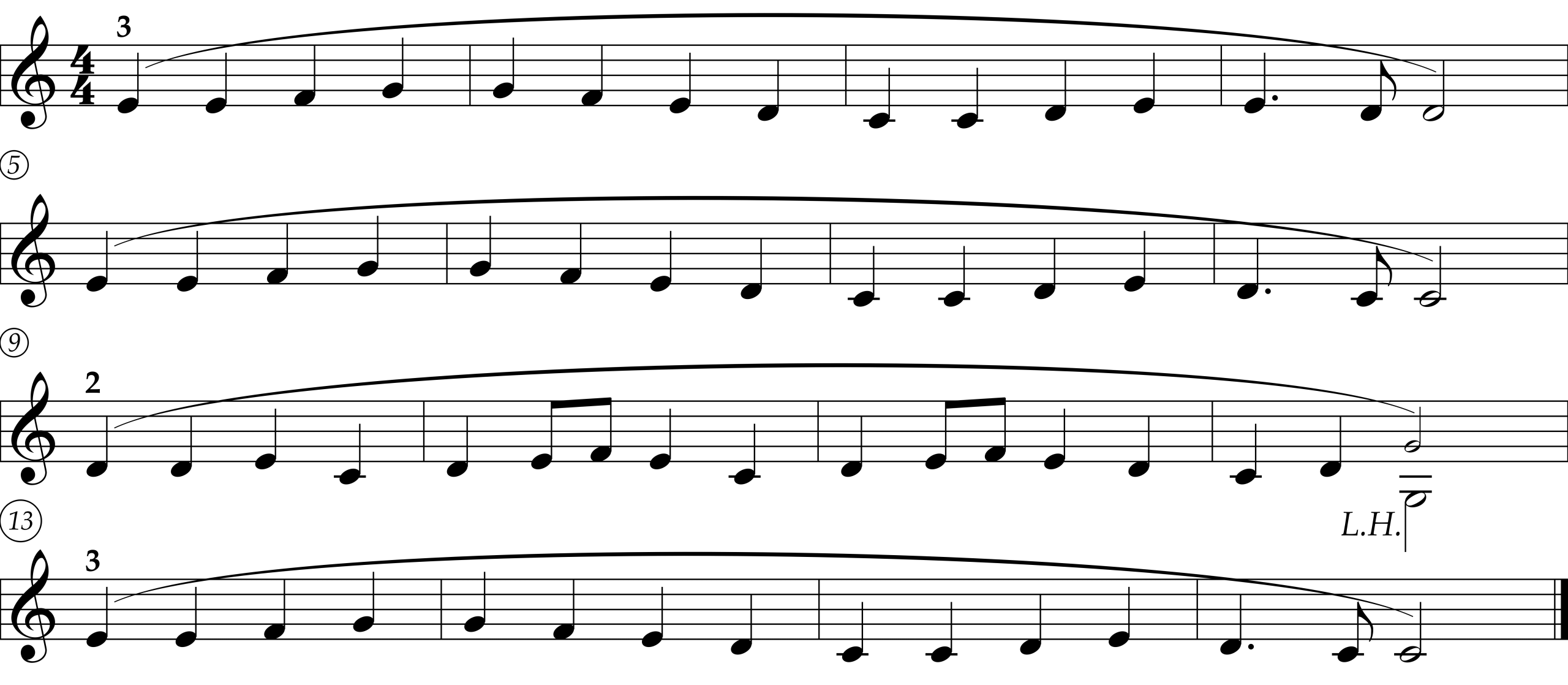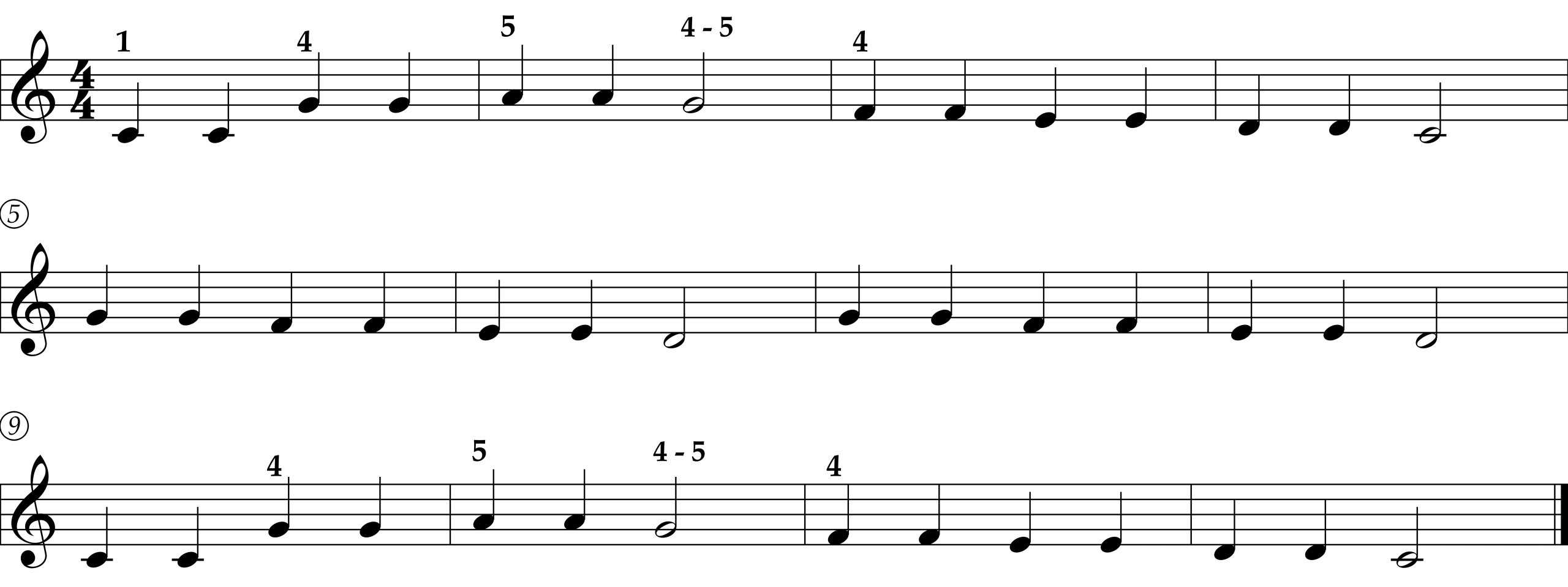17 Memorable Melodies
These melodies may be familiar to you already. We will return to them many times in this course, applying new levels of complexity as our skills develop.
How to Use These Melodies
- Learn them as written in the original key with the indicated fingering
- Harmonize with tonic (I) and dominant (V)—some will also use subdominant (IV). We will progress from harmonizing with chord roots only to chord shells and finally to full triads in closest position.
- Transpose them to other major keys. Keep track of your progress using the checkboxes below each melody.
Memorable Melodies Group 1
The melodies in Group 1 are played without moving from a five-finger pattern.
17.1 | Hot Cross Buns

English Folk Song

17.2 | Mary Had a Little Lamb

American Folk Song

17.3 | Ode to Joy

Ludwig van Beethoven

17.4 | God Is So Good

Christian Folk Song

Memorable Melodies Group 2
The melodies in Group 2 require small shifts outside the five-finger position, allowing you to practice expanding and contracting the hand and substituting fingers.
17.5 | Frère Jacques
Notice that finger 2 plays E in m. 3. Expand or open your hand a bit wider to accommodate this position shift.

French Folk Song

17.6 | London Bridge Is Falling Down
Observe the fingering m. 7. The hand must contract or close slightly to play the fourth with fingers 1 and 5, allowing the right hand to shift down for m. 8.

English Folk Song

17.7 | Michael, Row the Boat Ashore
Notice the fingering of the opening triad: this more open position allows finger 5 to reach up to A. In m. 6, finger 2 crosses over the thumb to bring the hand to a new position.

African American Spiritual

17.8 | Twinkle, Twinkle, Little Star
Observe the fingering in mm. 1–2. The right hand begins in an expanded position. In the third beat of m. 2, play G with finger 4. While 4 holds down the key, silently press the same key with finger 5 as well (you can position 5 farther out on the key—closer to your body). Then release finger 4. This finger substitution facilitates a slight shift in hand position.

French Folk Song
